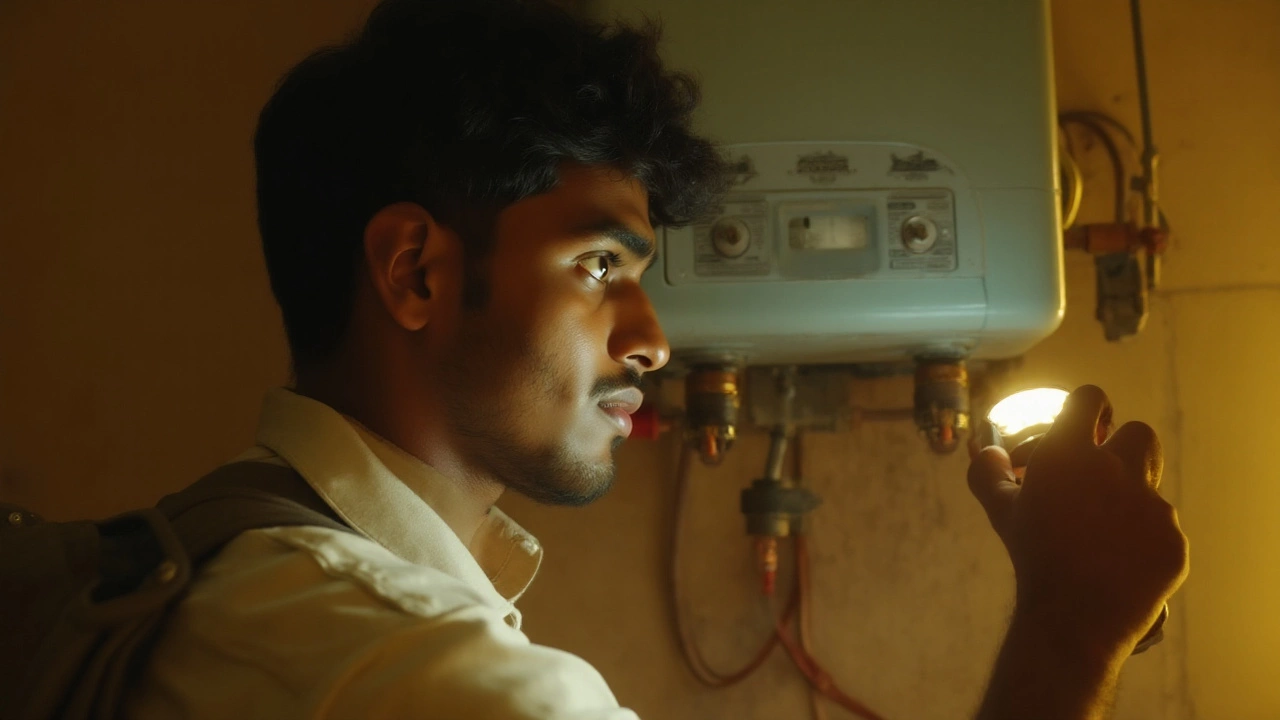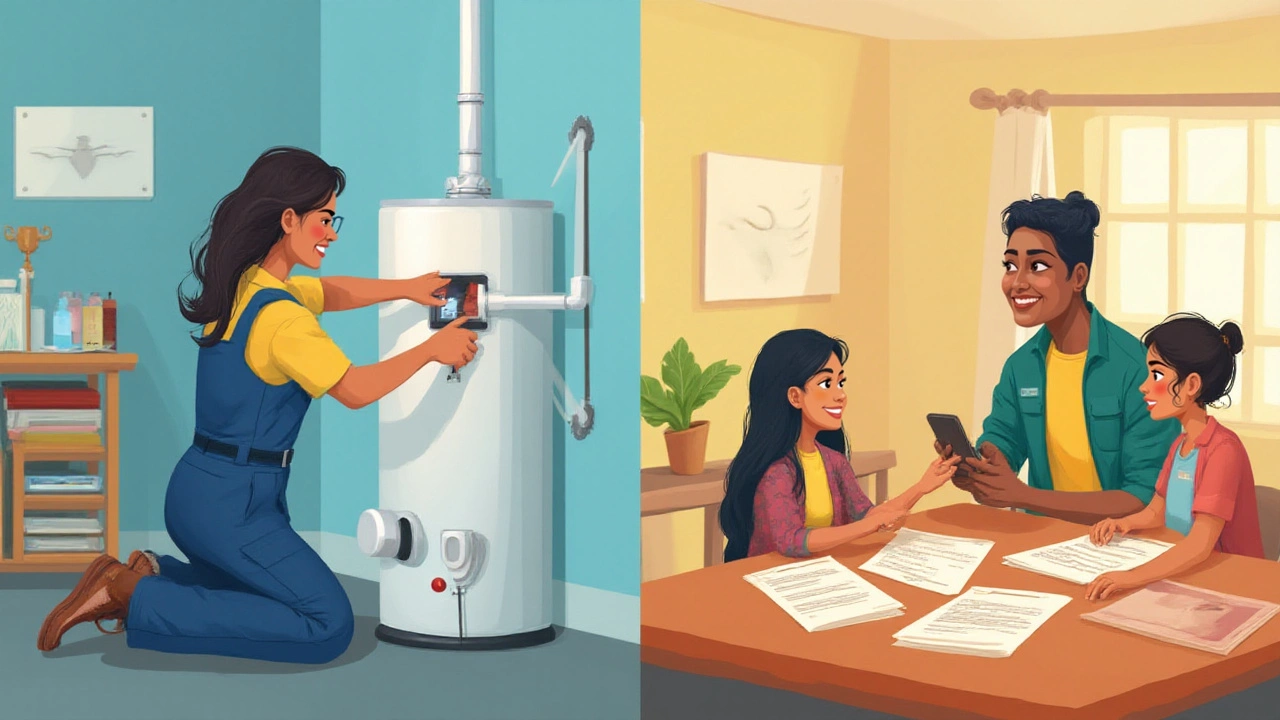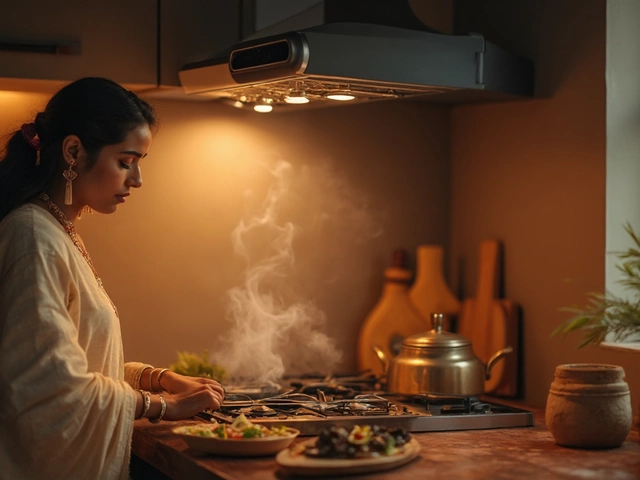Imagine stepping into the shower, bracing yourself for warm comfort, and suddenly – ice water rains down. The quick rush from daydreaming of a steamy, relaxing soak to a teeth-chattering cold snap can jolt anyone into panic mode. This isn't just about a tiny inconvenience; for most of us, hot water is daily therapy. So what's going on when it vanishes without warning? It's not always obvious, and sometimes the cause is weirdly simple.
The Most Common Reasons for Sudden Loss of Hot Water
Hot water just disappearing can leave anyone frustrated and scrambling. The real headache is figuring out why it happened, especially when everything seemed fine the day before. Hard fact: your water heater isn’t immortal. It has its moods, quirks, and sometimes throws in the towel with little warning. One top culprit? Tripped circuit breakers. With electric water heaters, a single flicker in the power supply can shut it down entirely – especially if the wiring or breaker is old or overloaded. Check the breaker box. You might score an easy fix just by flicking a switch.
Still nothing? Some water heaters have a reset button cleverly hidden away, often painted bright red. Push it gently and cross your fingers; sometimes this is all you need. But if it keeps tripping, don’t keep resetting. That’s a major hint something deeper is wrong. Now, if you own a gas water heater, other suspects show up: pilot lights go out, gas supplies can get interrupted, and thermocouples (they’re like little safety gatekeepers) can fail.
Old age matters, too. Most conventional tank heaters last about eight to twelve years. If your tank has a birthday in the last decade, start worrying about wear and tear like sediment buildup. Hard water makes it way worse, turning the bottom of the tank into a gritty mud-bath for important heating elements. Weird noises from your heater? Think clanking or popping—it’s probably sediment rattling around and killing efficiency. Also, if you’ve just had housework done—plumbing, renovations, even pest treatments—it’s worth checking if a shutoff valve got knocked or partially closed.
Let’s not forget thermostats. They can slip out of proper setting, get stuck, or just give out eventually. Perhaps the temperature dial was bumped, or a temperature-limiting valve (especially in newer builds) was accidentally triggered. And those fancy new tankless water heaters? They’re smart, but they shut down at the first whiff of a problem—low gas pressure, cold weather outside, restricted airflow, or even software glitches. If your heater has a digital display, look for error codes you can search up in the manual or online.
Sometimes, the real answer is plumbing. Are other taps cold too? Are you sure it’s not a wider water-supply problem? Municipal shutoffs happen for repairs, and while it sounds rare, it’s actually not. If the cold-water pressure is down or you hear weird gurgling, your water supply itself may have hiccupped.
Electric vs Gas Heaters: Spotting the Signs
Let’s dig into how electric and gas water heaters sound the alarm when they’re not working. With electric models, silence can be suspicious. No hum, no gentle vibration—just silence after years of gentle white-noise in your basement or closet. These units have a hidden fuse or circuit breaker that, if tripped, stops things dead but doesn’t look as dramatic as fire or leaking water. If everything seems powered on but the shower runs cold, give a close look to the fuse panel, which might show a telltale orange or red flag beside the water heater’s breaker switch.
Electric heaters also rely on two heating elements – one upper, one lower. If the upper fails, you lose all hot water. If the lower fails, you get a tease: only partial or inconsistent hot water. These elements can burn out with a little sizzle but give you no warning until your next cold shower. Testing them with a multimeter is one option if you’re handy, but remember—power off completely first, or you could get a nasty jolt. Thermostats can also give up without notice. If adjusting the temp does nothing, suspect the thermostat or element.
Gas water heaters are more theatrical when they quit. If you have one, listen and sniff—no flame means no characteristic gentle whoosh, and an out pilot light is usually accompanied by no warmth. Take a peek through the glass lens at the bottom: no blue flame means your pilot is out. Drafts can blow these out, or a thermocouple might have failed. Sometimes, gas valves get sticky or sediment coats the pilot orifice, hampering ignition. Relighting the pilot is possible for the brave with a long lighter and the manual, but always check for a rotten-egg (sulfur) smell—natural gas leaks are not a DIY situation.
Modern gas heaters may flash error codes or LED lights. Each code points to a different problem—blocked flue, sensor error, or low gas flow. Tankless? If your hot water vanishes and comes with a beeping unit and an error code, head for the manual; manufacturers often host troubleshooting flowcharts online. And, here’s an insider tip: gas heaters hate low water pressure. If you hear groaning in your pipes or see weak flow, check the pressure regulator at your main. Sometimes water companies temporarily lower pressure during night work.
Even if you’re lucky and just tripped a breaker, remember—for both electric and gas heaters, power cycling resets, and breaker flicks should be rare. If your heater pulls these stunts regularly, call in an expert. Sudden cold showers might be a sign your system is about to fail completely, which is never a fun surprise.

When Quick Fixes Work (And When to Call for Help)
Sometimes your headache ends with a flick of a switch or a quick push of the reset button—a relief, no doubt. But here’s how you can tell if your luck will hold or if the hot water gods demand more offerings. For electric water heaters, start with safety: turn off power first, then check for obvious signs. Is there any leaking or unusual noise? Do you see scorch marks or darkening at the panel? If so, stop there. Water and electricity don't mix, and even experienced DIYers call professionals for anything beyond simple resets or visual checks.
If all looks clean and dry, try this: wait 20-30 minutes after flipping the breaker or hitting reset. Sometimes patience pays off as fresh hot water creeps through. But if not, or if you smell anything suspicious like melting plastic, don’t mess around—call an expert. Electric heaters are pretty straightforward, but when components fail, they often take others down with them—creating complicated or even dangerous situations.
For gas heaters, double-check that the pilot light is out, and only relight if your manual gives clear steps and you smell no gas. Turn the gas control valve off first, then wait five minutes to clear fumes before trying again. If you've never done this, consider watching the exact model’s step-by-step video online—most manufacturers or trusted repair channels post super clear visuals. If the pilot won’t stay lit, the thermocouple is likely toast, which sadly isn’t as simple as a relight.
Look for leaks around valves, pipes, or the tank’s base—these spell trouble fast. Even a small drip can become a major issue that wrecks floors or walls. Most tanks have a pressure relief valve; if it’s wet, you might have an overpressure or overheating problem. Don’t cap it or try makeshift repairs—these are last-chance safety features. A constant drip here needs professional help, as it could hint at a failing tank.
Common quick-fix wins include making sure the shutoff valve is all the way open (sometimes called the ‘cold water inlet’—it needs to be fully on), checking that no one flushed the system (sometimes a plumber or DIYer will forget to restore things to normal), and confirming that the breaker, fuse, or gas line got switched off for some reason (power outages, rodents, or even mischievous pets pawing switches isn't as rare as you’d expect).
One more tip: rushing into buying a whole new heater at the first sign of trouble isn’t always the smart move. If your tank is less than 5 years old, most problems are repairable or covered under warranty—just have your model and serial number ready when you call. Repairs often cost less than half a new setup. But if you spot corrosion, bulging, or any signs that the tank itself is failing, it’s time to bite the bullet; replacement is safer in the long run than waiting for a flood.
Prevent Future Hot Water Surprises: Maintenance Hacks
Nobody wants to bounce out of bed and face cold water unexpectedly, so regular check-ups pay off big time. For electric tanks, take fifteen minutes every few months and flip the breaker to kill power before opening any panels. Then, check terminal screws for corrosion or loose connections. Look over the tank’s outside for rust, dampness, or corrosion—catching these early can save you hundreds.
Drain a bucket or two from the tank’s base every few months. That’s often enough to flush out hard-water sediment before it cakes into a solid layer. Got sandy or gritty hot water? That’s one of the first signs of sediment. Modern tanks sometimes have self-cleaning features, but even these can clog if you’ve got notoriously hard water in your area.
For gas tanks, checking the area around the heater matters. Sweep away lint, dust, or cobwebs—these can clog combustion air vents and undercut efficiency. A clear space around the tank also means you’ll spot leaks sooner and allow for better air flow—important for safe burning. You can also check the flame through the view glass; it should be steady and blue. Yellow or flickering flames mean incomplete combustion—usually a cleaning or service is in order.
Don’t ignore the pressure relief valve. Test it every six months by gently lifting its lever; some water should discharge through the drain pipe. If it sticks or dribbles long after, the valve may be failing or the tank overheating—both are repair jobs, but you’ll prevent a lot more damage by spotting a bad valve early. If you have a tankless system, clean or replace its water inlet filter as often as the manual says—usually every couple of months if you’re in a hard water area. Blocked filters are a sleeper cause of sudden cold showers.
If you notice that your hot water runs cooler in the winter, it might not be your imagination. Colder incoming water means your heater works harder, and tanks set for borderline temperatures might need a small turn-up. Just don’t go too high—anything above 120°F (49°C) brings scald risk and slams your energy bills. Modern tanks usually have a mark on the knob for this sweet spot.
Finally, keep a small notebook or phone app with the date of service, repairs, or odd noises. Spotting patterns is easier when you have the facts, and if you do need to call for help, sharing this info helps pros diagnose way faster.

When It's Time For a Change: Choosing Your Next Water Heater
If your old tank is really letting you down, you might be ready for something more reliable, or maybe even an upgrade to the newest tech. Age is usually the big factor—if your heater is north of 10 years old, it’s lining up to fail, especially if you’ve started noticing leaks or frequent breakdowns. But even newer tanks can fall short if your home’s hot water needs have changed. Maybe you added a bathroom, have more people showering, or switched to high-flow fixtures that gulp down hot water at a scary rate.
Tankless heaters get a lot of hype because they supply hot water on demand, so you never "run out" in theory. They're also more efficient, especially if your family schedule means staggered showers. But a single tankless unit can't always keep up with multiple showers running at the same time unless you pick the right size. Also, tankless units need regular cleaning (especially descaling), which can be a surprise maintenance chore for some homeowners.
Traditional tank heaters remain popular for their simplicity and lower upfront cost, and installation is faster—usually less than a day. They come in multiple sizes, so getting the right match for your household is key. The bigger isn’t always better: a too-large tank wastes energy, and too small leaves you back to cold showers.
Hybrid heaters, which mix heat pump tech with traditional heating, are another modern option gaining ground, especially where electricity rates are high but you have space in a basement or utility room. They're very efficient, pulling heat from the air and using less power to get water steamy warm. These work best in milder climates and may not suit every home, but they slash energy bills for many folks.
When shopping, compare first-hour ratings for tanks or flow rates for tankless models. Think about installation space, venting (especially for new gas models), and keep energy rebates in mind—there are often local, state, or federal cash-back offers for upgrading. And don’t ignore warranty terms. Sometimes shelling out a bit more for a better warranty will pay off the first time things get dicey.
Don’t just throw out the old tank—recycle it if you can. Scrap yards will often take them, or local utilities have recycling programs. While it may not make up for that recent cold shower, at least you'll know your dead heater is getting a second life as something useful.
If you’ve been battling cold water with DIY tricks and temporary resets, it might be your water heater’s way of telling you its best days are over. Next time you step into the shower, remember: spotting the early signs and doing the right quick fixes now might make the difference between an annoyingly chilly morning and a full-on water disaster.



